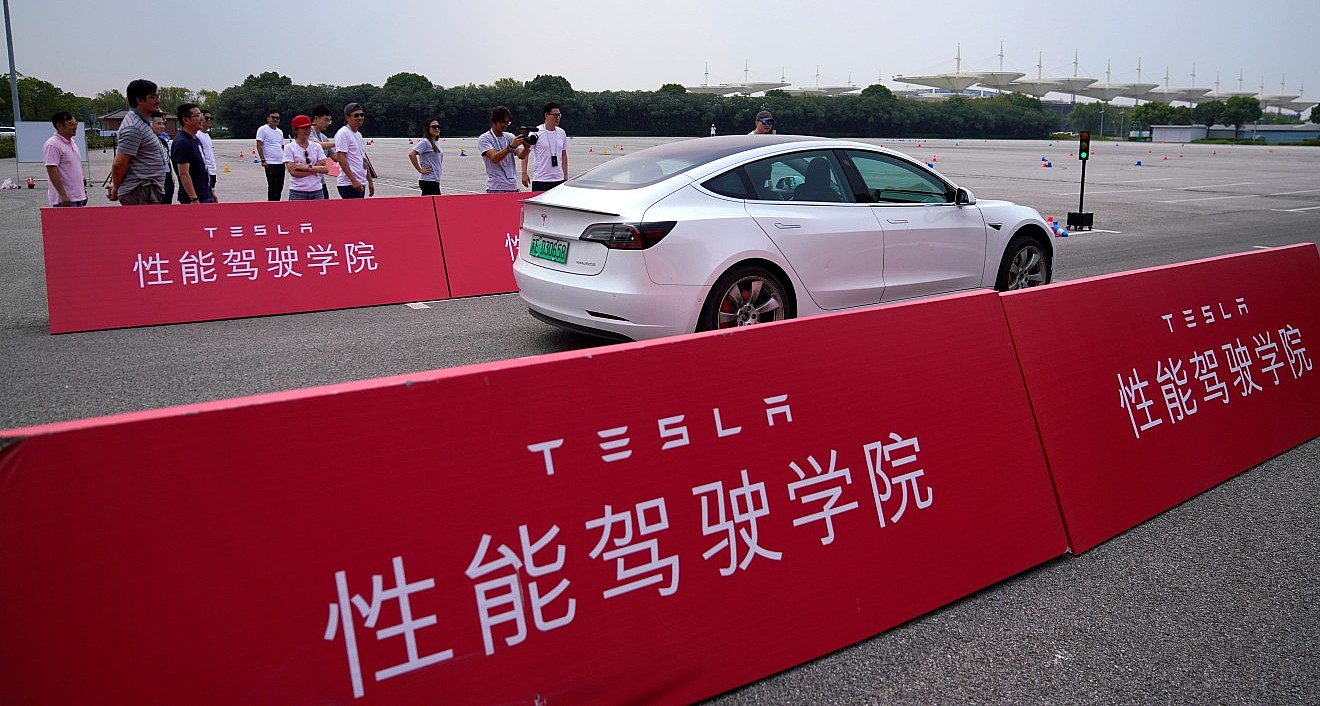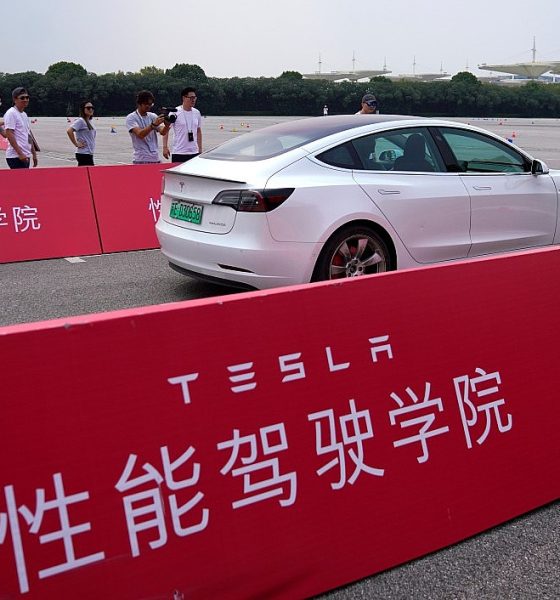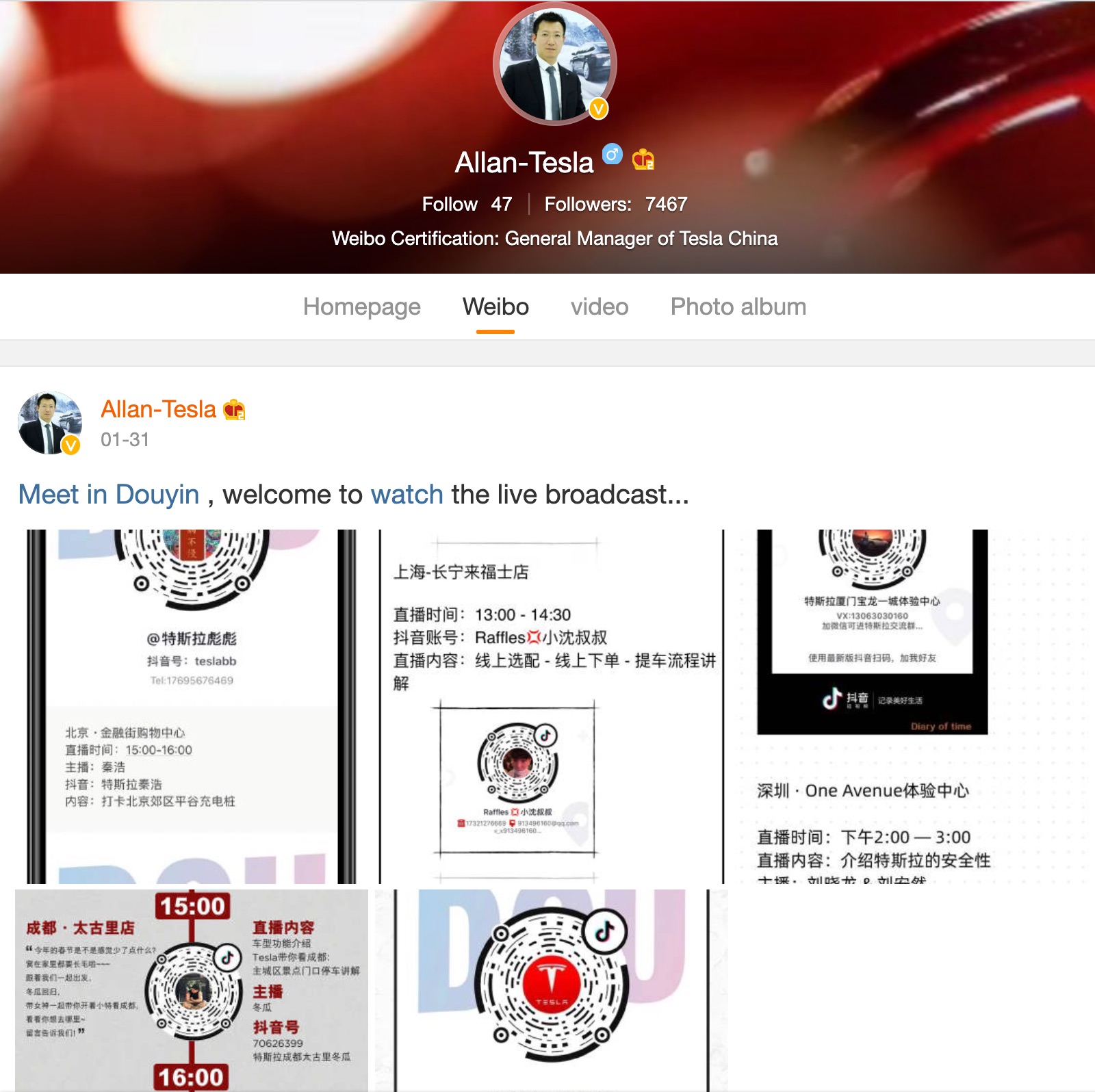

News
Tesla taps into Chinese TikTok for social media-based sales and customer support
Tesla may have temporarily shut down its electric vehicle factory in Shanghai due to the coronavirus outbreak, but the electric car company has taken to other channels to reach its enthusiastic market in China. More specifically, Tesla is using Douyin, China’s version of TikTok, to push knowledge-based content with the goal of driving more sales and deliver customer support to new and existing Tesla owners.
A tweet posted by Tesla owner and electric car enthusiast @Ray4Tesla shows Tesla stores in China are conducting livestreams that put the spotlight on Tesla vehicles and their features. Each store has its own account to stream videos that cover a variety of topics that are of interest to its customers.
Since Chinese mostly stay home these days, @teslacn is quick to come up this ingenious idea to reach ?? consumers thru Douyin (Tik Tok) to livestream sales reps (each store has its own account) featuring Tesla vehicles followed by Q&A. This is a free & powerful marketing tool. pic.twitter.com/DK7QepkGsc
— Ray4️⃣Tesla⚡️?☀️? (@ray4tesla) February 2, 2020
For instance, the Tesla Experience Center in Changsha is conducting live-streamed tours of the Model 3, followed by a Q&A call that allows potential buyers to interact directly with the sales representatives. Other broadcasts include tutorials to inform new buyers of charging and how to use Tesla’s Autopilot driving-assist feature, testimonials from the first Made-in-China Model 3 owners, and demonstrations of Tesla vehicles undergoing energy consumption tests.
Allan Wang, General Manager at Tesla China, has posted a comprehensive schedule of livestreams by each Tesla store on his Weibo page.

Tesla may have struggled with customer service in the US, but the all-electric car company seems to be making sure it doesn’t make the same mistakes in China. Considering China is the largest electric vehicle market in the world, it only makes sense for Tesla to turn to powerful yet severely underused social media channels that allow it to provide a more personalized level of service to a new base of customers.
Douyin, the Chinese version of video app TikTok, is one of the most popular social media apps in China. In its annual earnings report, Douyin parent company ByteDance announced that the app has grown to 400 million active users every day in 2019, up from 250 million daily active users at the beginning of last year. Marketing research firm eMarketer also said that Douyin’s growth outpaces that of earlier players Weibo and WeChat.
Douyin’s claim to fame is its emphasis on knowledge-based content, which it says is the most consumed type of content on its app in 2019. It’s also the largest mobile social network in China, with 67.9 percent of Chinese social network users actively on Douyin. The potential for using Douyin is huge, as it allows Tesla to provide educational broadcasts and reach a broad swath of the Chinese market for free while providing customers a closer look at Tesla’s products and company values.
No doubt, Shanghai-based Tesla competitor Nio recognizes Douyin as a sales and customer service tool, having taken a page out of Tesla’s playbook and creating its own Douyin accounts as well.

News
Tesla FSD fleet is nearing 7 billion total miles, including 2.5 billion city miles
As can be seen on Tesla’s official FSD webpage, vehicles equipped with the system have now navigated over 6.99 billion miles.

Tesla’s Full Self-Driving (Supervised) fleet is closing in on almost 7 billion total miles driven, as per data posted by the company on its official FSD webpage.
These figures hint at the massive scale of data fueling Tesla’s rapid FSD improvements, which have been quite notable as of late.
FSD mileage milestones
As can be seen on Tesla’s official FSD webpage, vehicles equipped with the system have now navigated over 6.99 billion miles. Tesla owner and avid FSD tester Whole Mars Catalog also shared a screenshot indicating that from the nearly 7 billion miles traveled by the FSD fleet, more than 2.5 billion miles were driven inside cities.
City miles are particularly valuable for complex urban scenarios like unprotected turns, pedestrian interactions, and traffic lights. This is also the difference-maker for FSD, as only complex solutions, such as Waymo’s self-driving taxis, operate similarly on inner-city streets. And even then, incidents such as the San Francisco blackouts have proven challenging for sensor-rich vehicles like Waymos.
Tesla’s data edge
Tesla has a number of advantages in the autonomous vehicle sector, one of which is the size of its fleet and the number of vehicles training FSD on real-world roads. Tesla’s nearly 7 billion FSD miles then allow the company to roll out updates that make its vehicles behave like they are being driven by experienced drivers, even if they are operating on their own.
So notable are Tesla’s improvements to FSD that NVIDIA Director of Robotics Jim Fan, after experiencing FSD v14, noted that the system is the first AI that passes what he described as a “Physical Turing Test.”
“Despite knowing exactly how robot learning works, I still find it magical watching the steering wheel turn by itself. First it feels surreal, next it becomes routine. Then, like the smartphone, taking it away actively hurts. This is how humanity gets rewired and glued to god-like technologies,” Fan wrote in a post on X.
News
Tesla starts showing how FSD will change lives in Europe
Local officials tested the system on narrow country roads and were impressed by FSD’s smooth, human-like driving, with some calling the service a game-changer for everyday life in areas that are far from urban centers.

Tesla has launched Europe’s first public shuttle service using Full Self-Driving (Supervised) in the rural Eifelkreis Bitburg-Prüm region of Germany, demonstrating how the technology can restore independence and mobility for people who struggle with limited transport options.
Local officials tested the system on narrow country roads and were impressed by FSD’s smooth, human-like driving, with some calling the service a game-changer for everyday life in areas that are far from urban centers.
Officials see real impact on rural residents
Arzfeld Mayor Johannes Kuhl and District Administrator Andreas Kruppert personally tested the Tesla shuttle service. This allowed them to see just how well FSD navigated winding lanes and rural roads confidently. Kruppert said, “Autonomous driving sounds like science fiction to many, but we simply see here that it works totally well in rural regions too.” Kuhl, for his part, also noted that FSD “feels like a very experienced driver.”
The pilot complements the area’s “Citizen Bus” program, which provides on-demand rides for elderly residents who can no longer drive themselves. Tesla Europe shared a video of a demonstration of the service, highlighting how FSD gives people their freedom back, even in places where public transport is not as prevalent.
What the Ministry for Economic Affairs and Transport says
Rhineland-Palatinate’s Minister Daniela Schmitt supported the project, praising the collaboration that made this “first of its kind in Europe” possible. As per the ministry, the rural rollout for the service shows FSD’s potential beyond major cities, and it delivers tangible benefits like grocery runs, doctor visits, and social connections for isolated residents.
“Reliable and flexible mobility is especially vital in rural areas. With the launch of a shuttle service using self-driving vehicles (FSD supervised) by Tesla in the Eifelkreis Bitburg-Prüm, an innovative pilot project is now getting underway that complements local community bus services. It is the first project of its kind in Europe.
“The result is a real gain for rural mobility: greater accessibility, more flexibility and tangible benefits for everyday life. A strong signal for innovation, cooperation and future-oriented mobility beyond urban centers,” the ministry wrote in a LinkedIn post.
News
Tesla China quietly posts Robotaxi-related job listing
Tesla China is currently seeking a Low Voltage Electrical Engineer to work on circuit board design for the company’s autonomous vehicles.

Tesla has posted a new job listing in Shanghai explicitly tied to its Robotaxi program, fueling speculation that the company is preparing to launch its dedicated autonomous ride-hailing service in China.
As noted in the listing, Tesla China is currently seeking a Low Voltage Electrical Engineer to work on circuit board design for the company’s autonomous vehicles.
Robotaxi-specific role
The listing, which was shared on social media platform X by industry watcher @tslaming, suggested that Tesla China is looking to fill the role urgently. The job listing itself specifically mentions that the person hired for the role will be working on the Low Voltage Hardware team, which would design the circuit boards that would serve as the nervous system of the Robotaxi.
Key tasks for the role, as indicated in the job listing, include collaboration with PCB layout, firmware, mechanical, program management, and validation teams, among other responsibilities. The role is based in Shanghai.
China Robotaxi launch
China represents a massive potential market for robotaxis, with its dense urban centers and supportive policies in select cities. Tesla has limited permission to roll out FSD in the country, though despite this, its vehicles have been hailed as among the best in the market when it comes to autonomous features. So far, at least, it appears that China supports Tesla’s FSD and Robotaxi rollout.
This was hinted at in November, when Tesla brought the Cybercab to the 8th China International Import Expo (CIIE) in Shanghai, marking the first time that the autonomous two-seater was brought to the Asia-Pacific region. The vehicle, despite not having a release date in China, received a significant amount of interest among the event’s attendees.








